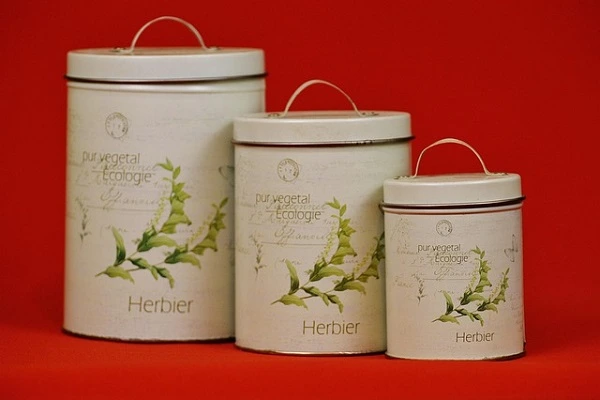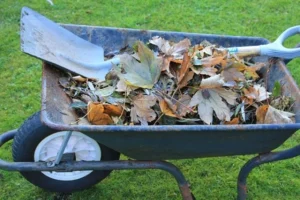In a small apartment, every inch counts — especially when you’re running a DIY vertical hydroponic system. Supplies pile up fast, and without a storage plan, clutter takes over.
Closet nooks are often-overlooked goldmines. With a few low-cost tricks, they can become efficient hubs for organizing tools, nutrients, and more.
You don’t need fancy shelves or expensive bins — just creativity and a system that works for you. In this article, we’ll explore budget-friendly storage tips that help you stay organized, save space, and keep your growing routine smooth.
Let’s turn that chaotic closet corner into a grower’s dream.
What Belongs in Your Hydroponic Closet Nook? (And What Doesn’t)
Before you start stuffing your closet with every grow-related item you own, pause for a second. Not everything in your hydroponic setup belongs in a dark, tight space — even if you’re short on room.
Closet nooks are great for storing tools and supplies, not for anything living or delicate. Think of them as your “backstage” — where everything gets prepped, stored, and ready for action.
Good Fits for Closet Storage
Your closet nook is perfect for keeping dry, shelf-stable items like:
- Nutrient bottles (sealed tight, preferably upright)
- Grow media like clay pellets or rockwool
- Net pots, extra tubing, and fittings
- pH and EC meters (in their cases)
- Labels, gloves, pipettes, seed trays, and sprayers
Keep items sorted and grouped — you’ll thank yourself later.
Not So Closet-Friendly
Avoid storing anything that’s moisture-sensitive, bulky, or alive. That includes:
- Water reservoirs or tanks (too heavy, risky for leaks)
- Grow lights (they get hot and need air flow)
- Live plants (they need light, not darkness)
- Electronics with poor casing or ventilation
- Open bags of organic material — they can mold
If something needs light, air, or constant access, it probably belongs elsewhere.
Quick Tip: Think “Frequency First”
Put frequently used items where you can grab them fast — eye-level or in bins near the front. Stuff you barely touch? Top shelves or deep in the back.
A little planning now means way less frustration later. And let’s be honest — less digging = more growing.
Maximize Verticality: Stack, Hang, and Clip Your Way to Space
When you’re growing hydroponically in a small apartment, horizontal space runs out fast. That’s why vertical storage is a game changer. Closet nooks may be narrow, but they offer plenty of untapped potential—if you start thinking up instead of out.
Start with stackable bins. These are perfect for grouping supplies by type—nutrients, tools, media, testing gear. Clear bins make it easy to see what’s inside, while opaque ones keep things looking clean. Either way, add labels so you don’t forget what’s what.
Don’t have shelves? Add some. You can install tension rod shelving, slide in a freestanding rack, or use a hanging shelf. Even a repurposed shoe rack can become an efficient vertical organizer for smaller items.
Walls are storage opportunities too. Pegboards are a smart, modular option. You can hang scissors, pH meters, tubing, and small tools in plain view. It’s easy to rearrange as your system grows or changes.
And don’t ignore the back of the closet door. Over-the-door organizers—originally meant for shoes or toiletries—are ideal for storing lightweight supplies like seed packets, gloves, or dropper bottles. Label each pocket and you’ve got a grab-and-go setup.
Lighting matters too. A dark nook is frustrating. Install a few battery-powered LED puck lights or clip-on lamps so you’re not rummaging around with a flashlight in your mouth.
Use every inch with intention. A vertical mindset doesn’t just save space—it makes your hydroponic routine smoother and more enjoyable.
Containers on a Budget: What You Can Repurpose Instead of Buy
If you’ve looked at the price of storage bins lately, you know it adds up fast. But here’s the good news: you probably already have everything you need to organize your hydroponic supplies. The trick is seeing everyday items as part of your growing system.
Look Around Before You Shop
You don’t need fancy containers. These common household items work just as well—and cost nothing:
- Mason jars or old sauce jars – Great for clay pellets, seeds, or small parts
- Takeout containers or yogurt tubs – Ideal for tools, net cups, or pH strips
- Shoe boxes – Stackable and good for nutrient bottles or gloves
- Coffee cans – Use for grow media or bulkier tools
- Berry or salad clamshells – Excellent for organizing labels or clips
Label them and you’ve got a fully functioning system, no store trip required.
Think Creatively About Structure
Other household items can double as organizers with almost no effort:
- Utensil trays or drawer inserts – Keep droppers, cords, or test strips separated
- Toilet paper rolls – Wrap cords or small tubing
- Old tote bags or backpacks – Hang on hooks for quick-access storage
These materials are often sturdier than they look and easy to tuck away in tight closet nooks.
Organize by Use, Not Just Size
Sort your supplies based on how often you use them. Daily-use tools should go up front. Rarely used backups? Store them out of the way. This makes your storage not just tidy, but practical—saving you time during each grow cycle.
Simple, cheap, and effective. That’s the hydroponic storage sweet spot.
Categorize and Rotate: A System You’ll Actually Stick With
An organized closet nook is great—until it falls apart. To keep things running smoothly, you need a storage system that works with your routine, not against it. The key? Categorize, label, and rotate based on real use.
Group by Task, Not Just Type
Think beyond materials and start with actions. Your supplies should reflect your daily or weekly grow habits.
Here’s one way to group:
- Seed-starting: net pots, grow cubes, seed packets
- Nutrient mixing: bottles, pipettes, measuring tools
- Monitoring: pH meter, EC meter, test strips
- Cleaning and care: gloves, wipes, brushes
- Backups and extras: spare tubing, labels, clips
Put each group in its own bin or drawer so you’re never scrambling.
Make It Easy to See
The easier it is to spot something, the faster you’ll grab it—and put it back.
- Use clear containers for visibility
- Try color-coded lids or labels
- Write big and bold if you’re labeling by hand
This is especially helpful for items you use less often but still need to find quickly.
Use Rotation to Stay Efficient
Frequently used tools? Keep them front and center, at eye level. Less-used or seasonal supplies? Store them in the back or higher up. And don’t forget to check inventory occasionally—you don’t want to run out of key items mid-grow.
A good system doesn’t have to be perfect. It just has to make your life easier every time you open that closet.
Utilize Unconventional Spaces: Thinking Outside the Closet
Small apartments demand creative use of every nook and cranny. Your hydroponic supplies don’t have to be limited to just closet nooks. There are plenty of other overlooked spaces that can become effective storage zones.
Look Up and Around
Vertical space isn’t just inside closets. Consider:
- Wall-mounted shelves: Perfect for lightweight items like seed packets or small tools
- Hooks and pegboards: Hang tubing, scissors, and meters for easy reach
- Behind doors: Over-the-door organizers or racks are great for gloves, labels, and droppers
Using vertical space clears out floor and shelf areas, giving you more room to move and work.
Think Small Spaces Inside Small Spaces
Don’t forget about hidden or narrow spots, such as:
- Inside cupboard doors
- Under sinks or counters
- In kitchen drawers or trays dedicated to hydroponic gear
Even a slim shelf or stackable basket in these spots can hold a surprising amount.
Portable Storage Solutions
Sometimes, the best storage is mobile. Small carts, rolling bins, or baskets can hold daily-use items and move easily between your closet nook and your growing area.
This flexibility lets you keep frequently used supplies at hand without cluttering your main workspace.
Keep It Accessible
No matter where you store, the goal is quick access. When you can grab what you need fast, your growing process feels less like a chore and more like a hobby.
Maintain Your Storage: Simple Habits for Long-Term Success
Keeping your closet nook organized is easier when you build habits that prevent clutter before it starts. Let’s explore easy ways to maintain your hydroponic supply storage over time.
Regular Check-Ins
Schedule a quick storage review every month or two. Use this time to:
- Toss expired nutrients or supplies
- Refill empty containers
- Rearrange items that have shifted
- Wipe down shelves and containers
This keeps things fresh and prevents build-up.
Keep a Running Inventory
Maintain a simple list—digital or on paper—of what you have and what you need. Update it as you use supplies or buy new ones.
This prevents last-minute scrambles when you run out of essentials.
Clean as You Go
After each growing session, spend a few minutes putting tools back in their place and wiping down any spills.
It takes little effort but saves you from major messes later.
Be Mindful When Adding New Supplies
Before bringing new items into your closet nook, ask yourself:
- Do I really need this?
- Where will it go?
- Can I fit it without creating clutter?
If you answer thoughtfully, your storage stays functional and organized.
Maintaining your system is about consistent, small steps—not big overhauls. With these habits, your hydroponic supplies stay ready and your closet nook stays tidy.
Small Spaces, Big Results with Smart Storage
Organizing your hydroponic supplies in a small apartment doesn’t have to be overwhelming. With smart, budget-friendly storage solutions—especially using closet nooks and vertical spaces—you can create an efficient, clutter-free system.
Key Takeaways:
- Use repurposed containers to save money
- Group items by task and frequency of use
- Maximize vertical and unconventional spaces
- Maintain your system with regular check-ins
These small changes add up to a smoother growing experience and less stress. When everything has its place, you spend less time searching and more time enjoying your thriving vertical hydroponic garden.
So, start looking around your apartment today—you might find the perfect storage spot is right under your nose.




